Neiman Marcus 2003 Annual Report Download - page 47
Download and view the complete annual report
Please find page 47 of the 2003 Neiman Marcus annual report below. You can navigate through the pages in the report by either clicking on the pages listed below, or by using the keyword search tool below to find specific information within the annual report.-
 1
1 -
 2
2 -
 3
3 -
 4
4 -
 5
5 -
 6
6 -
 7
7 -
 8
8 -
 9
9 -
 10
10 -
 11
11 -
 12
12 -
 13
13 -
 14
14 -
 15
15 -
 16
16 -
 17
17 -
 18
18 -
 19
19 -
 20
20 -
 21
21 -
 22
22 -
 23
23 -
 24
24 -
 25
25 -
 26
26 -
 27
27 -
 28
28 -
 29
29 -
 30
30 -
 31
31 -
 32
32 -
 33
33 -
 34
34 -
 35
35 -
 36
36 -
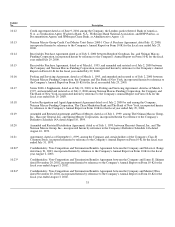 37
37 -
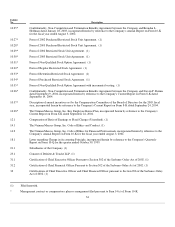 38
38 -
 39
39 -
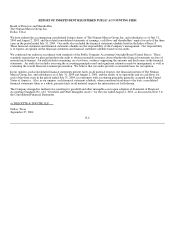 40
40 -
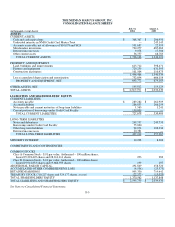 41
41 -
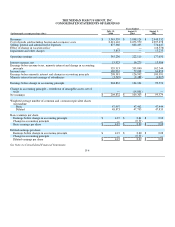 42
42 -
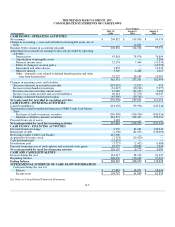 43
43 -
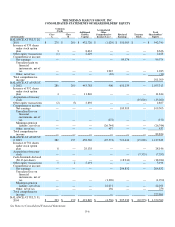 44
44 -
 45
45 -
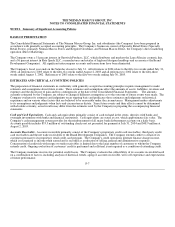 46
46 -
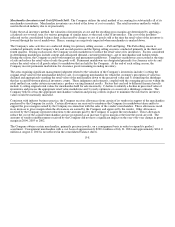 47
47 -
 48
48 -
 49
49 -
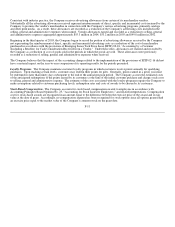 50
50 -
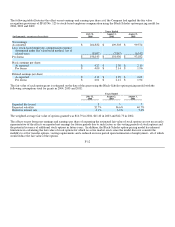 51
51 -
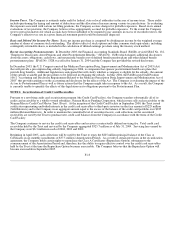 52
52 -
 53
53 -
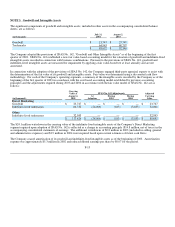 54
54 -
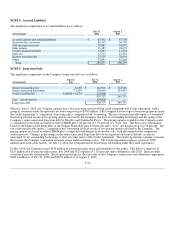 55
55 -
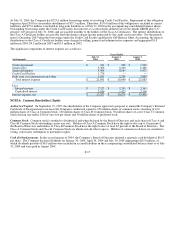 56
56 -
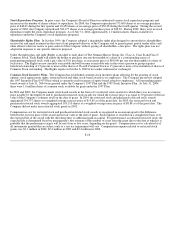 57
57 -
 58
58 -
 59
59 -
 60
60 -
 61
61 -
 62
62 -
 63
63 -
 64
64 -
 65
65 -
 66
66 -
 67
67 -
 68
68 -
 69
69 -
 70
70 -
 71
71 -
 72
72 -
 73
73 -
 74
74 -
 75
75 -
 76
76 -
 77
77 -
 78
78 -
 79
79 -
 80
80 -
 81
81 -
 82
82 -
 83
83 -
 84
84 -
 85
85 -
 86
86 -
 87
87 -
 88
88 -
 89
89 -
 90
90 -
 91
91 -
 92
92 -
 93
93 -
 94
94 -
 95
95 -
 96
96 -
 97
97 -
 98
98 -
 99
99 -
 100
100 -
 101
101 -
 102
102 -
 103
103 -
 104
104 -
 105
105 -
 106
106 -
 107
107 -
 108
108 -
 109
109 -
 110
110 -
 111
111 -
 112
112 -
 113
113 -
 114
114 -
 115
115 -
 116
116 -
 117
117 -
 118
118 -
 119
119 -
 120
120 -
 121
121 -
 122
122 -
 123
123 -
 124
124 -
 125
125 -
 126
126 -
 127
127 -
 128
128 -
 129
129 -
 130
130 -
 131
131 -
 132
132 -
 133
133 -
 134
134 -
 135
135 -
 136
136 -
 137
137 -
 138
138 -
 139
139 -
 140
140 -
 141
141 -
 142
142 -
 143
143 -
 144
144 -
 145
145 -
 146
146 -
 147
147 -
 148
148 -
 149
149 -
 150
150 -
 151
151 -
 152
152 -
 153
153 -
 154
154 -
 155
155 -
 156
156 -
 157
157 -
 158
158 -
 159
159 -
 160
160 -
 161
161 -
 162
162 -
 163
163 -
 164
164 -
 165
165 -
 166
166 -
 167
167 -
 168
168 -
 169
169 -
 170
170 -
 171
171 -
 172
172 -
 173
173 -
 174
174 -
 175
175 -
 176
176 -
 177
177 -
 178
178 -
 179
179 -
 180
180 -
 181
181 -
 182
182 -
 183
183 -
 184
184 -
 185
185 -
 186
186 -
 187
187 -
 188
188 -
 189
189 -
 190
190 -
 191
191 -
 192
192 -
 193
193 -
 194
194 -
 195
195 -
 196
196 -
 197
197 -
 198
198 -
 199
199 -
 200
200 -
 201
201 -
 202
202 -
 203
203 -
 204
204 -
 205
205 -
 206
206 -
 207
207 -
 208
208 -
 209
209 -
 210
210 -
 211
211 -
 212
212 -
 213
213 -
 214
214 -
 215
215 -
 216
216 -
 217
217 -
 218
218 -
 219
219 -
 220
220 -
 221
221 -
 222
222 -
 223
223 -
 224
224 -
 225
225 -
 226
226 -
 227
227 -
 228
228 -
 229
229 -
 230
230 -
 231
231 -
 232
232 -
 233
233 -
 234
234 -
 235
235 -
 236
236 -
 237
237 -
 238
238 -
 239
239 -
 240
240 -
 241
241 -
 242
242 -
 243
243 -
 244
244 -
 245
245 -
 246
246 -
 247
247 -
 248
248 -
 249
249 -
 250
250 -
 251
251 -
 252
252 -
 253
253 -
 254
254 -
 255
255 -
 256
256 -
 257
257 -
 258
258 -
 259
259 -
 260
260 -
 261
261 -
 262
262 -
 263
263 -
 264
264 -
 265
265 -
 266
266 -
 267
267 -
 268
268 -
 269
269 -
 270
270 -
 271
271 -
 272
272 -
 273
273 -
 274
274 -
 275
275 -
 276
276 -
 277
277 -
 278
278 -
 279
279 -
 280
280 -
 281
281 -
 282
282 -
 283
283 -
 284
284 -
 285
285 -
 286
286 -
 287
287 -
 288
288 -
 289
289 -
 290
290 -
 291
291 -
 292
292 -
 293
293 -
 294
294 -
 295
295 -
 296
296 -
 297
297 -
 298
298 -
 299
299 -
 300
300 -
 301
301 -
 302
302 -
 303
303 -
 304
304 -
 305
305 -
 306
306 -
 307
307 -
 308
308 -
 309
309 -
 310
310 -
 311
311 -
 312
312 -
 313
313 -
 314
314 -
 315
315 -
 316
316 -
 317
317 -
 318
318 -
 319
319 -
 320
320 -
 321
321 -
 322
322 -
 323
323 -
 324
324 -
 325
325 -
 326
326 -
 327
327 -
 328
328 -
 329
329 -
 330
330 -
 331
331 -
 332
332 -
 333
333 -
 334
334 -
 335
335 -
 336
336 -
 337
337 -
 338
338 -
 339
339 -
 340
340 -
 341
341 -
 342
342 -
 343
343 -
 344
344 -
 345
345 -
 346
346 -
 347
347 -
 348
348 -
 349
349 -
 350
350 -
 351
351 -
 352
352 -
 353
353 -
 354
354 -
 355
355 -
 356
356 -
 357
357
 |
 |

Merchandise Inventories and Cost Of Goods Sold. The Company utilizes the retail method of accounting for substantially all of its
merchandise inventories. Merchandise inventories are stated at the lower of cost or market. The retail inventory method is widely
used in the retail industry due to its practicality.
Under the retail inventory method, the valuation of inventories at cost and the resulting gross margins are determined by applying a
calculated cost-to-retail ratio, for various groupings of similar items, to the retail value of inventories. The cost of the inventory
reflected on the consolidated balance sheet is decreased by charges to cost of goods sold at the time the retail value of the inventory is
lowered through the use of markdowns. Hence, earnings are negatively impacted when merchandise is marked down.
The Company's sales activities are conducted during two primary selling seasons — Fall and Spring. The Fall selling season is
conducted primarily in the Company's first and second quarters and the Spring selling season is conducted primarily in the third and
fourth quarters. During each season, the Company records markdowns to reduce the retail value of its inventories. Factors considered
in determining markdowns include current and anticipated demand, customer preferences, age of merchandise and fashion trends.
During the season, the Company records both temporary and permanent markdowns. Temporary markdowns are recorded at the time
of sale and reduce the retail value of only the goods sold. Permanent markdowns are designated primarily for clearance activity and
reduce the retail value of all goods subject to markdown that are held by the Company. At the end of each selling season, the
Company records permanent markdowns for clearance goods remaining in ending inventory.
The areas requiring significant management judgment related to the valuation of the Company's inventories include 1) setting the
original retail value for the merchandise held for sale, 2) recognizing merchandise for which the customer's perception of value has
declined and appropriately marking the retail value of the merchandise down to the perceived value and 3) estimating the shrinkage
that has occurred between physical inventory counts. These judgments and estimates, coupled with the averaging processes within the
retail method can, under certain circumstances, produce varying financial results. Factors that can lead to different financial results
include 1) setting original retail values for merchandise held for sale incorrectly, 2) failure to identify a decline in perceived value of
inventories and process the appropriate retail value markdowns and 3) overly optimistic or conservative shrinkage estimates. The
Company believes it has the appropriate merchandise valuation and pricing controls in place to minimize the risk that its inventory
values would be materially misstated.
Consistent with industry business practice, the Company receives allowances from certain of its vendors in support of the merchandise
purchased by the Company for resale. Certain allowances are received to reimburse the Company for markdowns taken and/or to
support the gross margins earned by the Company in connection with the sales of the vendor's merchandise. These allowances result
in an increase to gross margin when the allowances are earned by the Company and approved by the vendor. Other allowances
received by the Company represent reductions to the amounts paid by the Company to acquire the merchandise. These allowances
reduce the cost of the acquired merchandise and are recognized as an increase to gross margin at the time the goods are sold. The
amounts of vendor reimbursements received by the Company did not have a significant impact on the year-over-year change in gross
margin in 2004, 2003 or 2002.
The Company obtains certain merchandise, primarily precious jewelry, on a consignment basis in order to expand its product
assortment. Consignment merchandise with a cost basis of approximately $220.4 million at July 31, 2004 and approximately $214.0
million at August 2, 2003 is not reflected in the consolidated balance sheets.
F-8
